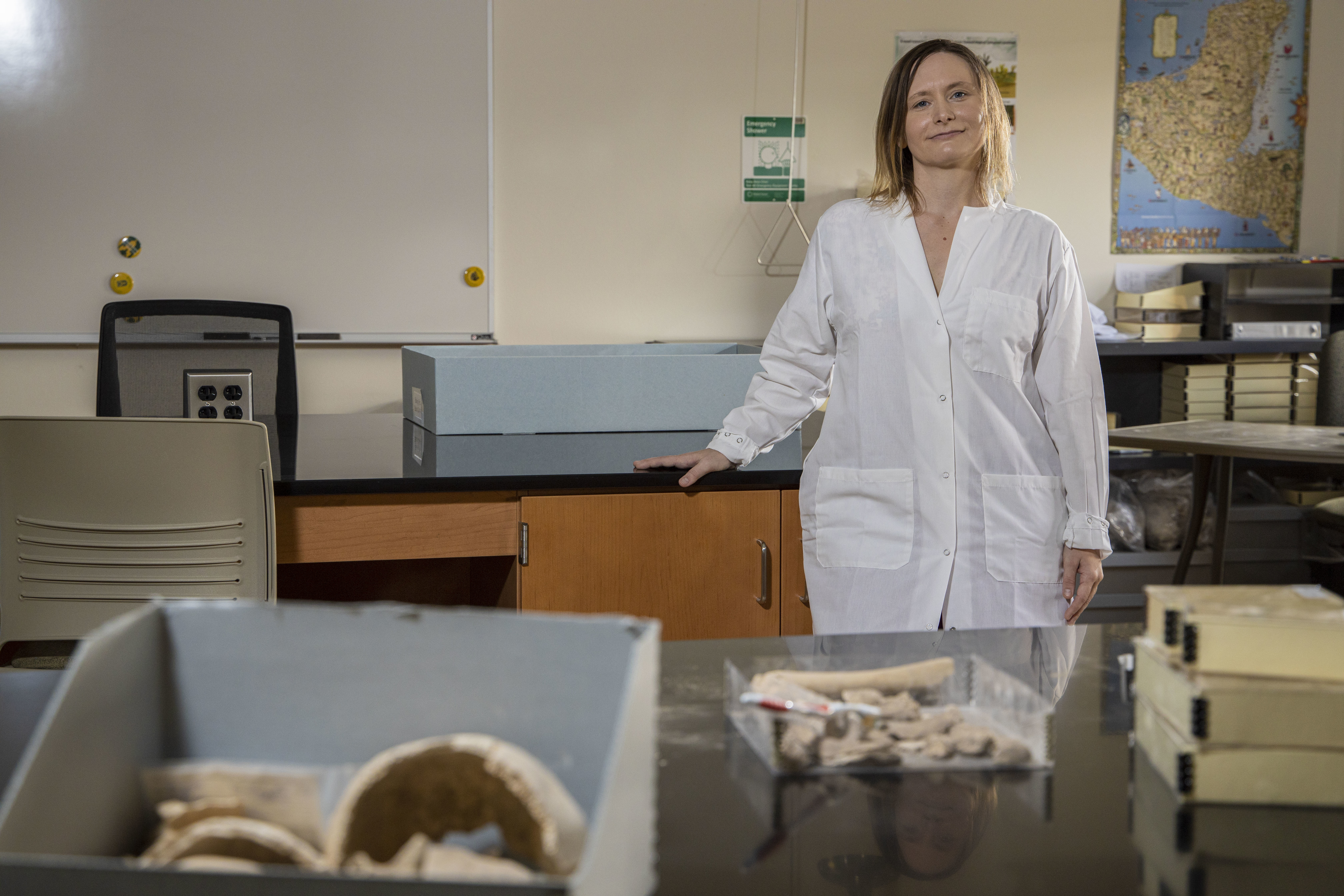Unearthing the Past for Modern Understanding

Buried beneath centuries of change in the Maya lowlands of Belize, Julie Hoggarth, Ph.D., uncovers tales of drama and intrigue—political uprisings and breakdowns, ancient rulers, droughts, floods and abandoned societies. These stories are pieced together, clue by clue, from discoveries found in the ruins of Maya structures and cities.
“I study the complex processes associated with the collapse of ancient societies,” Hoggarth, an assistant professor of anthropology at Baylor, says. “I’m really interested in identifying the factors that contributed to the breakdown in political systems and demographic changes, with my research focused primarily on the ancient Maya.”
Hoggarth drew widespread attention in the spring of 2019 for the discovery of an ancient painted vase in the Belize River Valley. Known now as the Komkom vase, it bears the date of A.D. 812 and contains one of the longest hieroglyphic texts ever uncovered in the lowlands of Central America. Large sherds of the vase, believed to be a ruler’s drinking vessel, were pieced together to connect images which tell stories of warfare that provide clues to societal breakdown.
It was a major find for Hoggarth and the excavation team she led, but the discovery’s foundation was set long before it was unearthed through high-level scholarship and research.
Radiocarbon Chronology
Radiocarbon dating has enabled archaeologists to chart a wealth of information about the times they study, to better pinpoint when a discovery actually took place.
“In the past, we could identify cultural changes within a couple hundred years,” Hoggarth explains. “Let’s say we knew the Classic Maya collapse occurred between AD 750 and 1000. Now we can identify specific events that happened within relatively short time frames. We can actually pinpoint distinct episodes, separated in time, which is very exciting.”
In 2015, Hoggarth received a grant from the National Science Foundation (NSF) to develop a high-precision radiocarbon chronology in the Maya lowlands. Her charge was to find the precise timing of breakdowns in Maya political systems, population decline and abandonment. The award represented a meaningful step in her contributions to the discipline and a recognition of her experience, honed over the years in the field. Excavation of archaeological sites often yield numerous puzzle pieces, requiring a trusted leader to determine which samples are meaningful and to interpret the human behaviors they represent.
Artifacts represent some of those puzzle pieces, which can be cross-referenced with temporal clues for the times they were used or the events they represent. For instance, the Komkom vase was found shattered in a royal palace complex in Baking Pot, a site mysteriously abandoned by the Maya in the eight and ninth centuries. Before leaving a community behind, Maya would conduct abandonment rituals by smashing pots and other materials in the plazas of their cities. The fortuitous dating of the pot precisely in 812 unlocks answers, and further questions, about the nature of societal breakdown for the Classic Maya.
Most discoveries do not contain a precise calendar date, providing Hoggarth the opportunity to put a variety of anthropological skills to use. After archaeological materials are discovered, choosing which samples to date is paramount. An important material when investigating Maya civilization is charcoal. When organic materials such as plants or food become charred, they are preserved in the archaeological record and can be dated through radiocarbon dating. These materials are particularly vital for dating in Belize, where the humid environment causes wood and other organic materials to quickly decompose. Other clues come in more widely-recognized forms, like vases or the fragments of other materials used by people in the past. The more of them you have, and have pinpointed with a date, a clearer view of the changes experience by those who used them emerges.
“You have to determine what type of activity it is that you’re actually dating. You define the event and choose appropriate samples,” Hoggarth says. “Then, you take into consideration several questions—are the dated samples in different stratigraphic sequence with each other? If so, we can model some of the dates down to shorter time frames than we could previously. High-precision radiocarbon dating also has smaller attached errors and using Bayesian statistics we can model some dates down to shorter spans if we have stratigraphic information.”
While leading the excavation in Belize for the NSF-funded project, Hoggarth and her team had focused excavation in the plaza of the ceremonial center of Baking Pot where the important vase was found.
Modern Applications
Classic Maya artifacts may be over 1,000 years old, but the activities and decision making they represent resonate still today. The distinct societal aspects that shaped the way ancient Maya interpreted pivotal events—climate change, natural disasters, political unrest—may change, but human responses and the ingenuity needed to adapt remains. The Komkom Vase paints a picture of war and unrest, providing a glimpse into the challenges of the Classic Maya. Long-term understandings of climate and its impact on food production, glimpsed through archaeological and historical evidence, provides a clearer image of the unease that led to political breakdown.
“When we think about the application of these issues to today, we of course can think about how people are responding to environmental changes, climate change and the strategies that are developed to address them,” Hoggarth says. “Do people choose to conserve resources? What impact does a drought have on a political system? A lot of people might, when they think about past societies, think they had more limited ways to deal with problems. But many ancient societies, including the Maya, developed innovative and resilient systems that were scientifically advanced methods for their time. We can also learn from the decisions they made, whether the outcomes were negative or positive.”